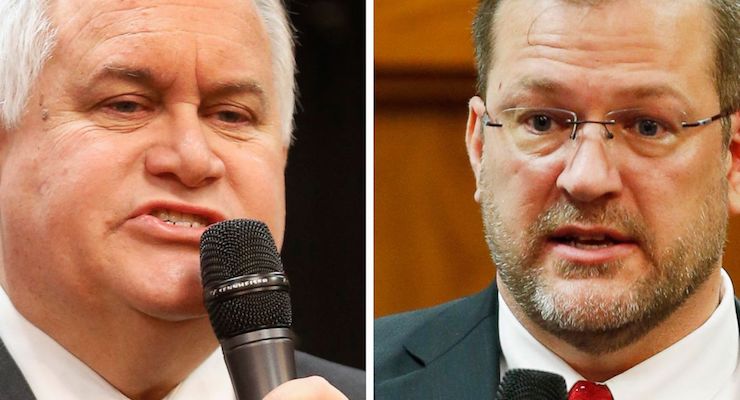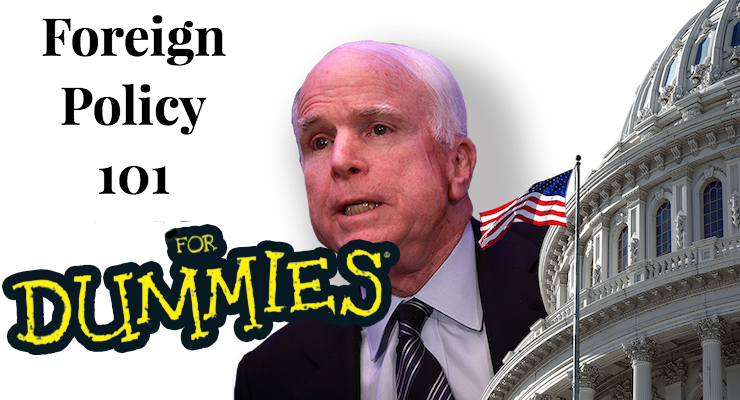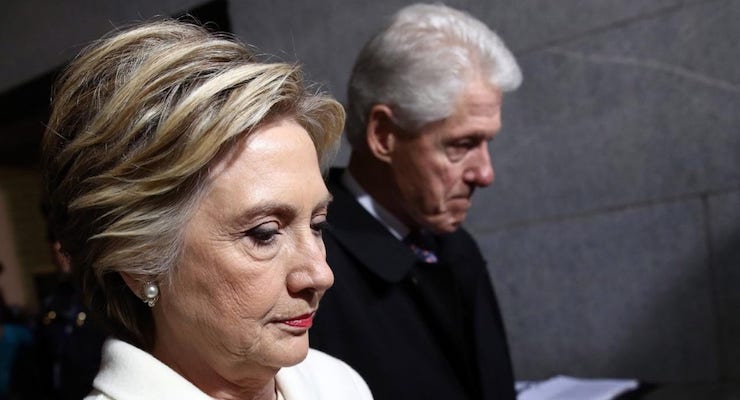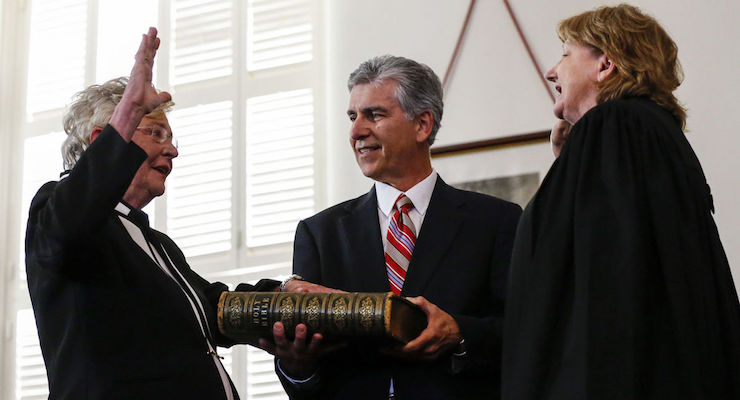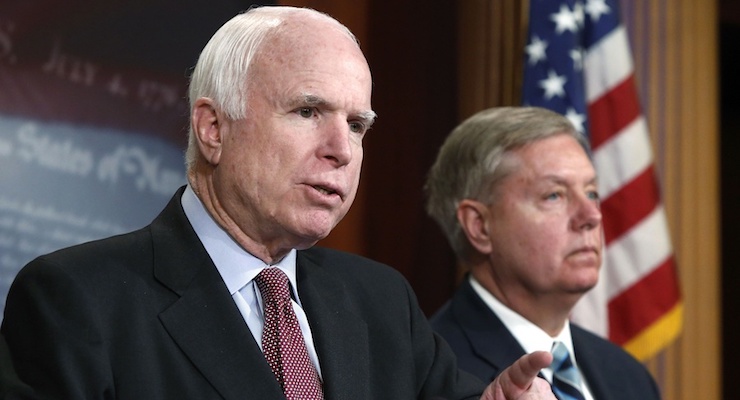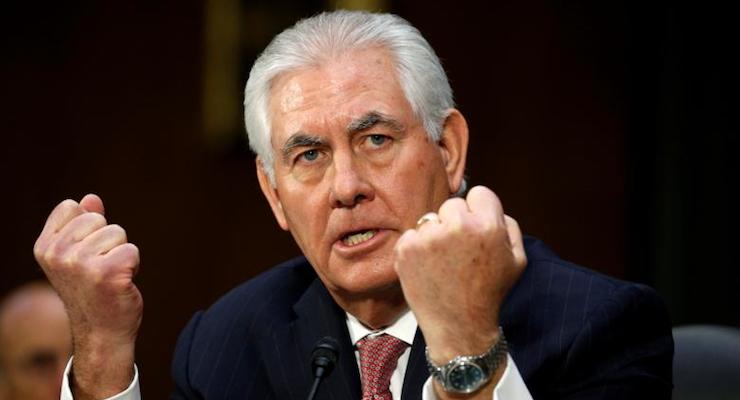Media Reading Too Much Into Kansas Special Election Results
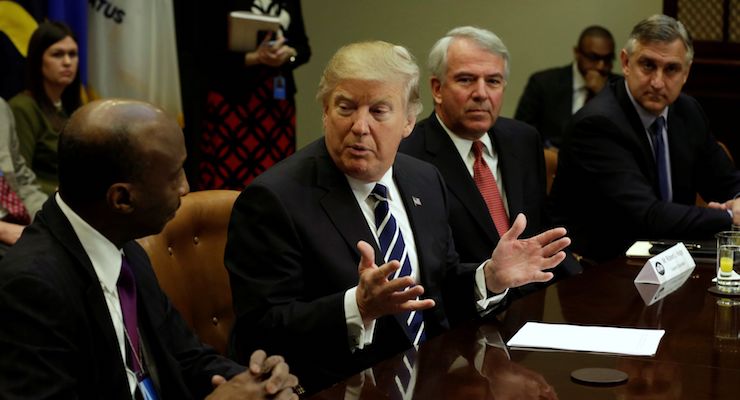
President Donald J. Trump meets with the National Association of Manufacturers at the White House on March 31, 2017. (Photo: Reuters)
Republican Ron Estes prevailed in the Kansas special election, but underperformed enough for the media pundits to draw unsupported conclusions. President Donald J. Trump carried the 4th Congressional District by nearly 30 points and Mike Pompeo won reelection in 2016 by more than 30 points.
But now-Rep. Estes, the state treasurer, was in a political fight against Democrat James Thompson for a seat Republicans have held for more than two decades. He ran roughly even with Thompson in Sedgwick County, which represents about two-thirds of the vote, after President Trump carried it by a 20-point margin.
The last time a Democrat carried the 4th Congressional District was in 1992, and the media headlines before and after the election are painting the race as a referendum on President Trump. The Huffington Post two days ago had already offered their readers a headline, “How Democrats Are Faring In The First Tests Of The Trump Backlash.”
I’m not buying it. At least not yet. Put bluntly, the “Referendum on Trump” argument as an explanation for the closeness of the race is weak, and the cases (plural) for several other factors are just too strong.
Let’s take a look at a few of them.
Candidate Strength
The race was rated Likely Republican on the PPD Election Projection Model, despite the fact Mr. Estes was a particularly weak candidate. He scored a 2 out of 5 on candidate strength. Several variables determine this ranking, including ideology, charisma, fundraising and the current political landscape.
Regarding the latter, he was a member of and rightfully associated with Republican Gov. Sam Brownback’s unpopular administration. The governor is reportedly being considered for an ambassador role by President Trump, and he might need it.
According to a Morning Consult Poll, two-thirds (66%) disapprove of the job Gov. Brownback is doing, while just 27% still approve. That’s markedly more poor than the President’s most recent approval rating on the PPD Big Data Poll, which put out the most accurate state-level surveys in 2016.
As far as ideology, the Brownback Administration is a conservative one. While Kansas is ruby red, it hasn’t elected staunch conservatives and Mr. Estes is not a Republican in the mold of the President–a populist Trumplican. The state also has a long progressive history that is often mischaracterized by other media pundits. It’s more accurate to call it a populist history, which is no longer synonymous with progressivism practiced by the modern Democratic Party.
Mr. Thompson scored a far better 3.75 out of 5 on the model’s candidate strength scale. He’s a likable and articulate candidate with no political experience in what is still an anti-establishment political environment. Mr. Thompson also had a remarkable personal story, starting in life as a homeless, out of school teenager who would go on to serve in the U.S. Army and practice law in Wichita for 13 years.
It also certainly didn’t hurt that he was a Republican until March 2016.
Trump’s Approval Rating
New numbers are due out later this week, but the latest PPD Big Data Poll put the national approval rating for the President at 43%, just under the historical threshold where a party has to worry about their leader being a drag on down-ballot races. In the district and statewide, President Trump is no doubt far more popular than the nation as a whole, meaning it would be a mute point.
Presidential approval rating matters, but our research shows the statewide average would need to be roughly 46% before partisan leans are impacted significantly, which it isn’t.
Conclusion
There are a few more claims I’d like to address before wrapping this up. Exhibit A:
If KS-4 happened in a vacuum, fine. But on top of CA-34 last week. GA-6 looking close. Trump approval at 40. Generic ballot big Dem lead…
— (((Harry Enten))) (@ForecasterEnten) April 12, 2017
First, prior to both the 2010 and 2014 Republican midterm wave elections, the party suffered a series of special election defeats. It’s true that they can have some predictive value, but these claims are wholly unrelated and more than a little misleading. Hillary Clinton also had a rather large national lead in the same polls claiming Democrats have a big lead on the generic ballot, which the PPD Big Data Poll does not show (it’s 2 points).
Nevertheless, President Trump won in an electoral vote landslide even as he lost the popular vote. Pointing to what may very well be a downward trend in Republican participation in deep blue California, particularly during a special election in a Democratic district, doesn’t speak to races in competitive states. President Trump even underperformed in more Republican-friendly Orange County, yet still cleaned Mrs. Clinton’s clock when and where it mattered.
Worth noting, there were zero ticket-slits in 2016, adding to the suspicion that national polls are becoming more problematic due to polarization in and among key states.
Let’s first see how the race for the 6th Congressional District in Georgia goes before we pass further judgement. Democrats can certainly pull off an upset there, but their chances diminish greatly if they don’t take more than 50% of the vote in the first round of voting. President Trump underperformed juxtaposed to Mitt Romney in the district, but Democrats still have a low non-majority ceiling according to PPD Battleground State Likely Voter Metrics and Tom Price cruised to victory with nearly 62% of the vote.
Republican Ron Estes prevailed in the Kansas
